 |
Fairy tale and lifeWhy does a person invent a fairy tale? What is a folk tale? What symbols are there in fairy tales, for example, about elections in Armenian fairy tales, in Russian folklore about golden and ordinary eggs, Faberge's golden eggs and the tragedy of the royal family? Marina Baghdagyulyan hosted fairy tale expert and translator Alvard Jivanyan in the pavilion of the "Day 6" program. |
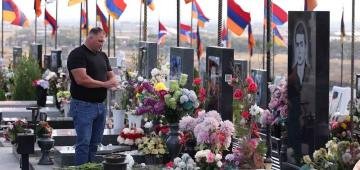 |
Poghos MrjumyanPoghos Mrjumyan has undergone 12 surgeries, the last one months ago. Poghos, his father, brother, and son-in-law volunteered to participate in the 44-day operation. Poghos was seriously injured by a hailstone on October 2 in Jrakan. Almost his entire body was covered in shrapnel, and his legs were especially damaged. Armenian soldiers were the first to come to his aid, but they later died. |
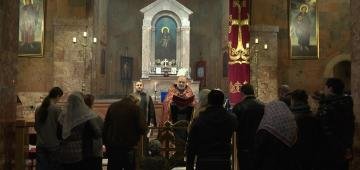 |
A naming ceremony was held at St. Sarkis ChurchEvery Saturday, after the morning service, a blessing service is held at the St. Sarkis Church, the Primate of the Ararat Patriarchal Diocese, for those whose names or surnames are mentioned in the church calendar. The qahana.am website publishes the day of remembrance every week and invites people to receive a blessing. The announcement is also posted on the church wall. |
 |
Armenia has chosen the winner of the prestigious Goncourt literary prizeLast year, Armenia selected its laureate of the prestigious Goncourt literary prize, French-Rwandan writer and singer Gael Fay, for his new novel Jacaranda. With this, Armenia officially became the 39th country to join the international Goncourt selection with its student jury and gain the opportunity to participate in global literary processes. At the Francofest, which will take place on November 15, Nymeg will present the Armenian edition of Jacaranda. Anahit Margaryan spoke with Ani Hakobyan, head of literary programs at Nymeg Publishing House, and Manu Iritsyan, responsible for multimedia content, about the Goncourt prize, Gael Fay’s bestseller, Francofest, books, printing, and literary marketing at Artfocus. |
 |
Aksel BakuntsWhat role did the film "Zangezur" play in the life of screenwriter Aksel Bakunts and what influence did it have on his fate? Novelist Hovhannes Yeranyan talks about the film "Zangezur" and Aksel Bakunts. |
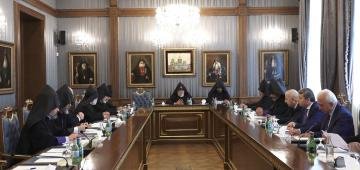 |
The meeting of the Supreme Spiritual Council concluded
The Supreme Spiritual Council has strongly condemned the blatant illegal encroachments and oppression against the rights of the Church and clergy, the spread of hate speech and intolerance.
The Council reaffirmed the position of the Mother See of Holy Etchmiadzin to support the establishment of justice and protect the rights of the Church’s ministers and the faithful, once again calling on law enforcement agencies to stop illegal criminal proceedings and release the imprisoned clergy and civilians. The Council emphasized that steps are needed to restore the rights of the Mother See and the liturgical life in the Hovhanavank Monastery, protect the spiritual and canonical life of the faithful, and ensure the normal service of the clergy.
|
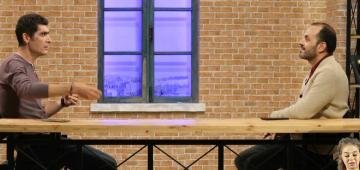 |
About one story: Hrant Matevosyan, "The Dogs"Hrant Matevosyan's story "Dogs" is among his "youthful" works and is somewhat different from the other famous works of the Armenian prose master. The writer uses remarkable stylistic devices here, makes subtle references to other works of Armenian and world literature. Hrant Matevosyan's story "Dogs" is discussed on the "Parallel Readings" program by literary critics Hayk Hambardzumyan and Arkmenik Nikoghosyan. |
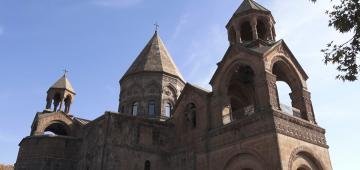 |
Father Taron, who joined the defrocked Stepan Asatryan, has left the place of spiritual serviceHe was assigned to Haghartsin, but left his place of service after a few months. According to him, he left his place of spiritual service because he received an indefinite leave of absence from His Holiness Bagrat, while the vicar of the Tavush diocese, Archbishop Samvel Mkhitaryan, reports that this claim is false. 1.5 years ago, His Holiness Bagrat was no longer the head of the Tavush diocese, therefore, the priest could not receive permission from him to go on leave. |
 |
The International Organ Music Festival was held for the third timeIn 2022, the long-standing dream of the founder of the Armenian organ school, the late Vahagn Stamboltsyan, was realized in Armenia. The International Organ Music Festival was organized on the initiative of the National Center for Chamber Music and with the support of the Armenian Chamber Music Society. This year, the festival is being held for the third time. It kicked off on September 24 with a concert dedicated to Komitas. From September to December, the best masters of organ art perform in Armenia. Art critic Anahit Margaryan spoke with Armen Sukiasyan, artistic director of the International Organ Music Festival and deputy director of the National Center for Chamber Music, about the festival and organ art in “Artfocus”. |
 |
Hakob AnandyanHakob Manandyan was one of the great scientists who, by teaching at the Gevorgyan Theological Seminary, had turned that institution into the world's largest center of Armenology. Manandyan spoke more than ten languages, and taught history as well as various languages at the seminary. He wrote more than 150 scientific works in Armenian, Russian, and German. After the seminary was closed, when the first state university was opened, Manandyan became the head of the history department, and then was elected rector of the university. He was one of the founding academicians of the National Academy of Sciences. When the scientist was reminded of his great merit, he replied that all this should be considered a tribute of gratitude to the seminary, where he spent his best years. |
 |
My worldIn 2010, 15 deacons received priestly ordination and anointing from the Primate of the Aragatsotn Diocese, Bishop Mkrtich Proshyan. Today, they serve in various dioceses in Armenia and the Diaspora. On the 15th anniversary of their ordination, the brothers from the diocese gathered and visited their spiritual father, the illegally imprisoned Archbishop Mkrtich. |
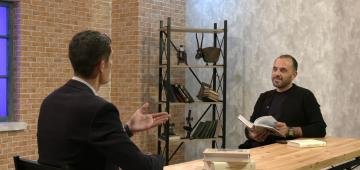 |
Avetik Isahakyan's loves and romanceWhen talking about Avetik Isahakyan's love poetry, the image of the poet's youthful love, Shushanik, is traditionally emphasized, but there were other sources of inspiration in Isahakyan's life as well. Isahakyan's large-scale letters, especially published in recent years, provide an opportunity to see more clearly the path from emotion to poetry and the real addressees of those poems. In the framework of the "Parallel Readings" program, literary critics Hayk Hambardzumyan and Arkmenik Nikoghosyan discuss these issues. |
